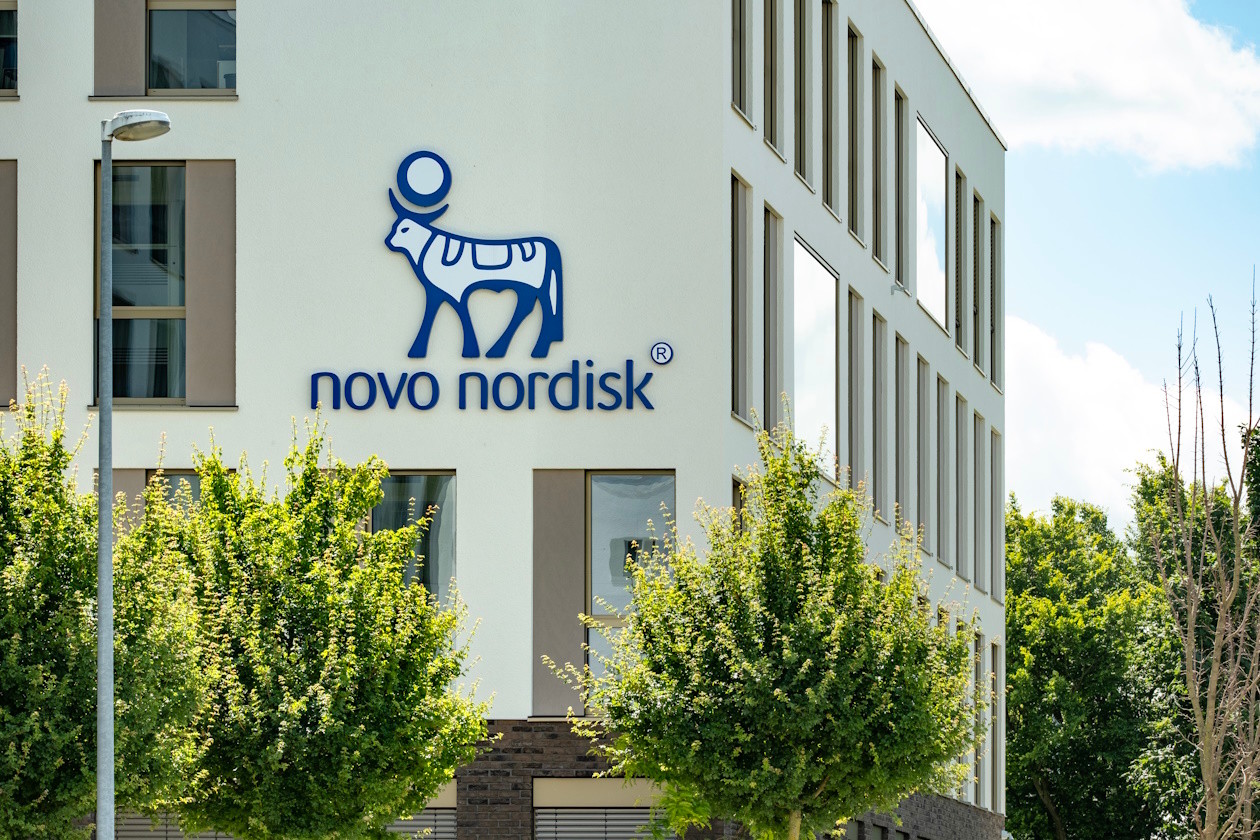As guided in a recent trading statement, Novo Nordisk’s first half sales increased 18% to DKK 154.9bn (Danish Kroner), ignoring the impact of exchange rates. Growth was boosted by a 58% increase in Obesity care sales, but the company’s share of the GLP-1 market declined in both the US and international markets.
Operating profit was up 29% to DKK 72.2bn, enhanced by a reduction in research & development costs.
Free cash flow for the half year fell by DKK 7.7bn to DKK 33.6bn, driven by additional investment in manufacturing capacity. Net debt came in at DKK 80.3bn.
Full-year guidance remains in the recently reduced ranges of 8-14% for sales and 10-16% for operating profit.
Spending on share buybacks and dividends came to DKK 36.5bn, and the interim dividend was raised 7% to DKK 3.75.
The shares were down 3.3% following the announcements.
Our view
Coming hot off the heels of a trading update, there were few surprises in Novo Nordisk’s first-half results. But confirmation of this year’s second downgrade, and market share losses in GLP-1 treatments for obesity and diabetes, were enough to provide a further dent to investor sentiment.
Cost-cutting is one lever the group’s looking to pull on to stop the rot, with a fall in research & development expenses a notable feature of the first half. But with competition intensifying in anti-obesity medication, holding back on innovation is a dangerous game to play.
We still think the company has a very large opportunity ahead, but incoming CEO Mike Doustdar has his work cut out if he’s to win back investors trust. Diversifying Novo’s therapeutic focus and regaining the upper hand in bringing differentiated anti-obesity products to market are targets we’d like to see prioritised. But quick wins are likely to be few and far between.
In the United States, Novo’s been losing market share in the all-important GLP1 class of drugs for diabetes and weight loss. Competition is also starting to hold back growth in international markets. With rival Eli Lilly’s competing product comparing well on both price and efficacy that’s perhaps no surprise. What’s more, there have been some research and development disappointments, which have weighed heavily on investor sentiment, and ultimately cost Mike Doustdar’s predecessor his job.
The recent prohibition of non-regulated versions of some of Novo’s medicines should have boosted growth, but it seems there’s been little success in enforcing the ban. And with so much depending on these products, there’s little hiding place when market dynamics move in the wrong direction. Meanwhile, uncertainty over US tariffs is a risk that continues to cast a shadow over the industry.
With the valuation under pressure, Novo’s dividend yield looks more meaningful than it has for a while. But share buybacks have been placed on pause following a period of high investment, and no payouts can be assured. That’s particularly true while the capital allocation priorities of the new Chief Executive are unknown.
That same valuation weakness may tempt some new investors to gain exposure to a class of treatments that look set to revolutionise healthcare treatment. But some very real questions have been raised about the outlook for Novo’s market position, and it’s too early to tell whether the new man in charge has the answers.
Environmental, social and governance (ESG) risk
The pharmaceuticals sector is relatively high-risk in terms of ESG. Product governance, particularly with safety and marketing, and affordable access to treatment are the key risk drivers. Labour relations, business ethics and bribery and corruption are also contributors to ESG risk.
According to Sustainalytics, Novo Nordisk's management of ESG risks is strong.
Executive pay is linked to both financial and non-financial targets, including sustainability targets, though it's unclear exactly how the two are linked. Novo Nordisk's product quality and safety programmes are adequate. The company also addresses pricing and access to medicine in emerging markets and the US. In general, Novo Nordisk has strong policies and programmes to address business ethics issues, but fails to address anti-competitive practices and has been implicated in alleged price fixing and questionable promotional activity controversies.
Novo Nordisk key facts
All ratios are sourced from LSEG Datastream, based on previous day’s closing values. Please remember yields are variable and not a reliable indicator of future income. Keep in mind key figures shouldn’t be looked at on their own – it’s important to understand the big picture.
This article is not advice or a recommendation to buy, sell or hold any investment.No view is given on the present or future value or price of any investment, and investors should form their own view on any proposed investment.This article has not been prepared in accordance with legal requirements designed to promote the independence of investment research and is considered a marketing communication.Non - independent research is not subject to FCA rules prohibiting dealing ahead of research, however HL has put controls in place(including dealing restrictions, physical and information barriers) to manage potential conflicts of interest presented by such dealing.Please see our full non - independent research disclosure for more information.


